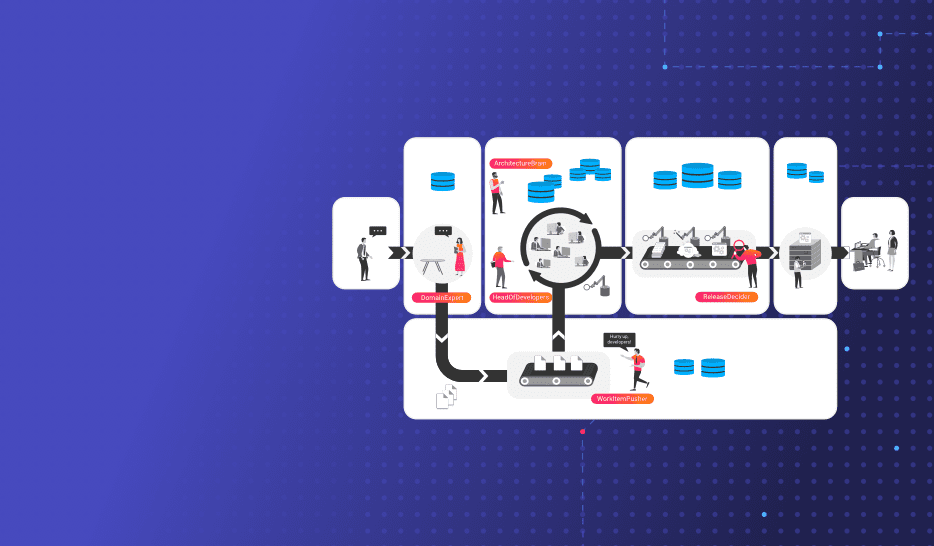

Below is an abbreviated summary of an article originally written in German by Oliver Viel in CIO Magazine.
In today’s business landscape, software development has become a fundamental pillar of value creation across all industries. Every large enterprise must now operate at scale as a software company, regardless of its core business. However, software development often lags behind other business functions in terms of industrialization and operational excellence.
CIOs and CTOs are now under immense pressure to professionalize their software engineering processes—moving beyond traditional IT management toward a fully optimized Software Factory. But how can companies ensure that their software development is not just efficient but also strategically aligned with corporate goals?

In the past, software development was often seen as a technical necessity rather than a core business function. However, the rapid digitization of industries has changed this perspective. Software is no longer just a support function—it is a key driver of competitive advantage, innovation, and business growth.
Yet, despite its critical role, software development is often plagued by inefficiencies, delays, and quality issues. Unlike traditional manufacturing, where processes are well-structured and optimized, software projects frequently suffer from missed deadlines and unpredictable outcomes. The reason? A lack of transparency, control, and structured governance.
Bernd Rattey, CIO of DB Fernverkehr AG, emphasizes this shift: “IT is now an essential success factor for almost every element of a company’s value chain. The way IT interacts with business processes must be redefined.”
For years, many organizations underestimated the growing importance of software, especially those that enjoyed a strong market position. Dirk Ramhorst, CIO of Wacker Chemie, highlights this with a reminder: “Almost ten years ago, we heard the phrase ‘Software eats the world’ in Silicon Valley. That message is now more relevant than ever, and many companies still have significant gaps to close.”
One of the biggest challenges is ensuring that software development processes are both agile and accountable. The traditional approach of centralized, hierarchical control simply doesn’t work in a world of rapid technological change. At the same time, completely decentralized and autonomous teams can lead to chaos if not properly managed.
Christian Bär, CDO of Datev, explains: “Software Factories cannot be run with directive leadership and rigid hierarchies. In today’s VUCA (Volatility, Uncertainty, Complexity, Ambiguity) world, only adaptable organizations will survive.”
To truly transform software development, companies must bridge the gap between agility and control. This is where Software Process Mining and Software Product Analytics come into play.
Oliver Laitenberger, Partner at Horn & Company, states: “Executives should be able to plan and manage software development objectively using data—whether in traditional or agile settings. Many decision-makers still lack the necessary tools to gain real transparency.”
Professor Jürgen Döllner of the Hasso Plattner Institute emphasizes the importance of leveraging data: “Companies must be able to analyze their software ecosystems in an intuitive and strategic way. The technology to do this exists, but it remains vastly underutilized.”
One of the most promising solutions for managing enterprise software development at scale is the Digital Boardroom. This concept enables executives to oversee software engineering in real time using advanced analytics and automated insights.
Dr. Johannes Bohnet, Founder of Seerene, explains: “A Digital Boardroom consolidates all relevant data, giving executives the visibility they need to align software development with business strategy. It eliminates the false dichotomy between a ‘Culture of Trust’ and a ‘Culture of Control’—you can have both.”
By integrating software analytics, companies can:
Without these capabilities, companies risk falling into the common trap of managing software in the dark—making decisions based on assumptions rather than facts.

Despite the growing adoption of agile methodologies, many enterprises still struggle with software silos that resist change. Large organizations must create hybrid structures that accommodate teams with diverse levels of expertise and motivation.
If they fail, they face a difficult choice: attempt to reform internal software development or outsource it—risking a loss of knowledge and strategic control.
Christian Bär warns: “Even within IT companies, many organizations are still structured in outdated hierarchies because those models were successful in the past. But the market is evolving so rapidly that failing to modernize software governance is no longer an option.”
In the new era of software-driven business, CIOs and CTOs must lead the charge in transforming software development into a strategic asset. The time for incremental improvements is over—enterprises need a Software Factory approach that is transparent, data-driven, and built for long-term success.
Read the entire article in German on CIO.de or on computerwoche.de.
These Stories on News
August-Bebel-Str. 26-53
14482 Potsdam, Germany
hello@seerene.com
+49 (0) 331 706 234 0
Generative AI Seerene GmbH
August-Bebel-Str. 26-53
14482 Potsdam, Germany
hello@seerene.com
+49 331 7062340